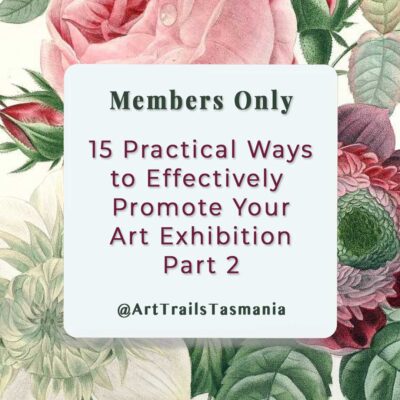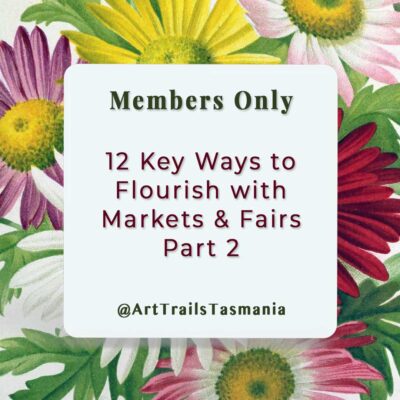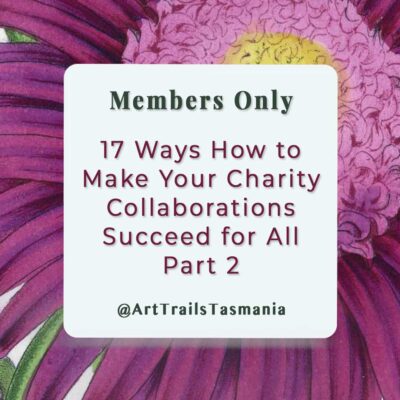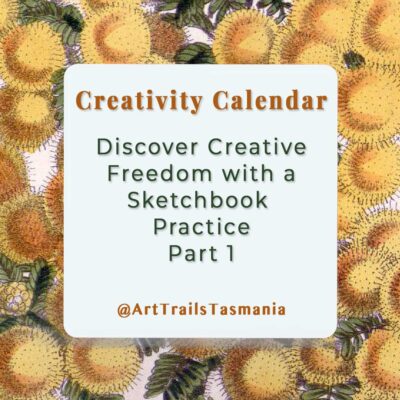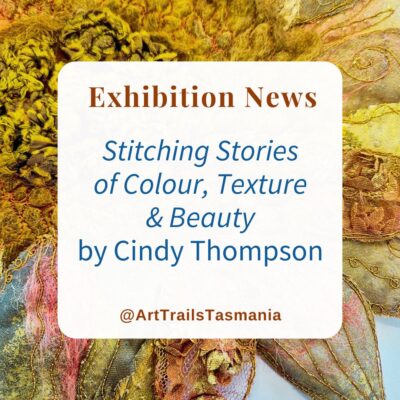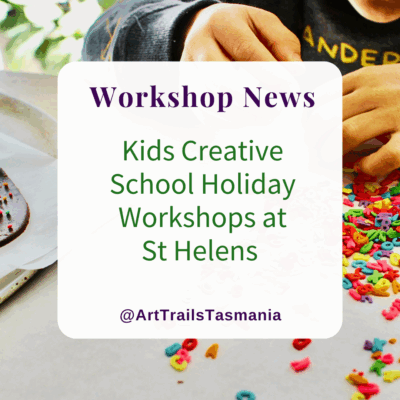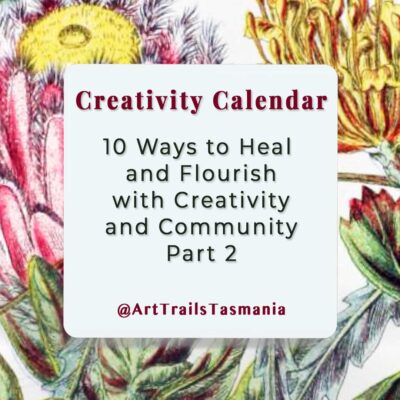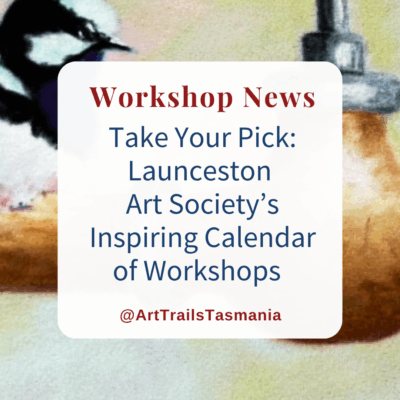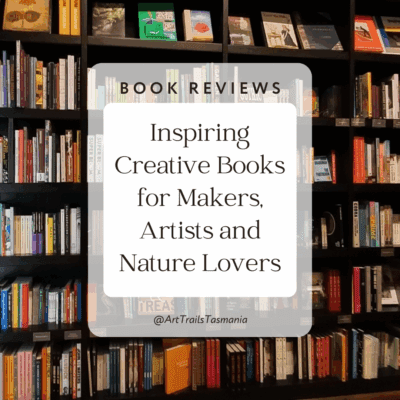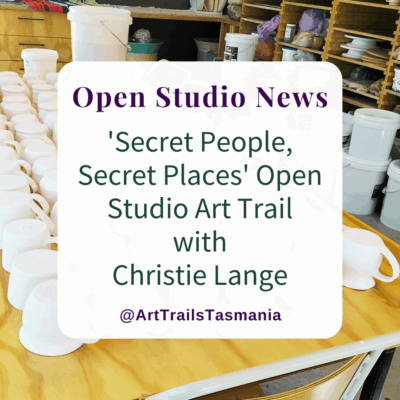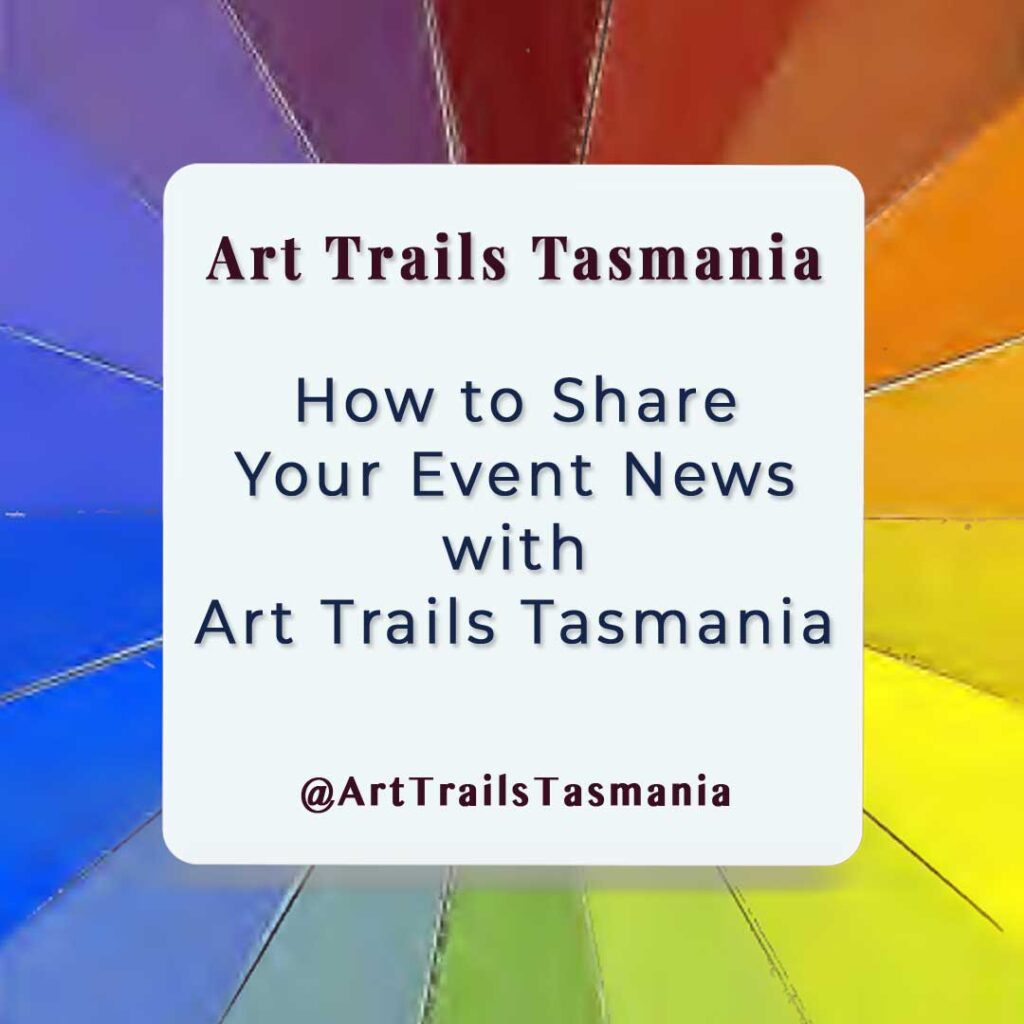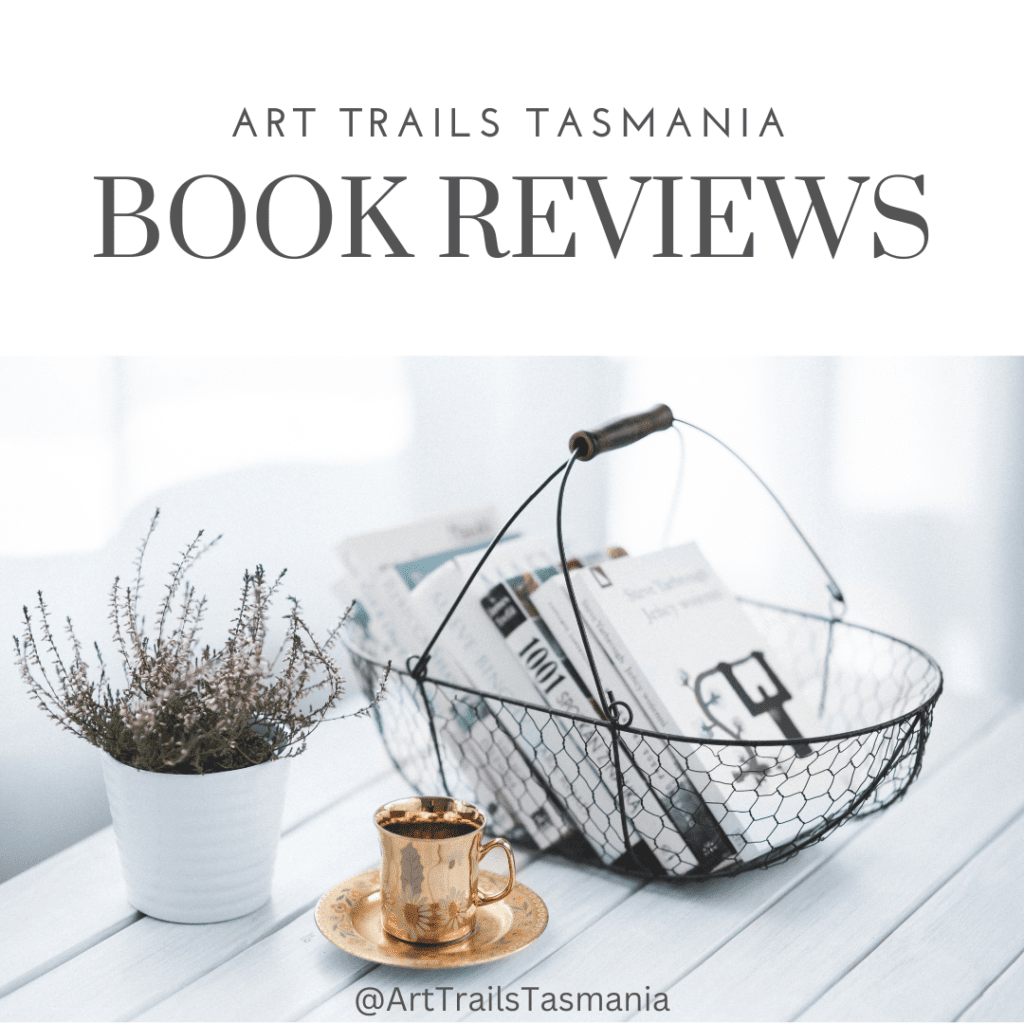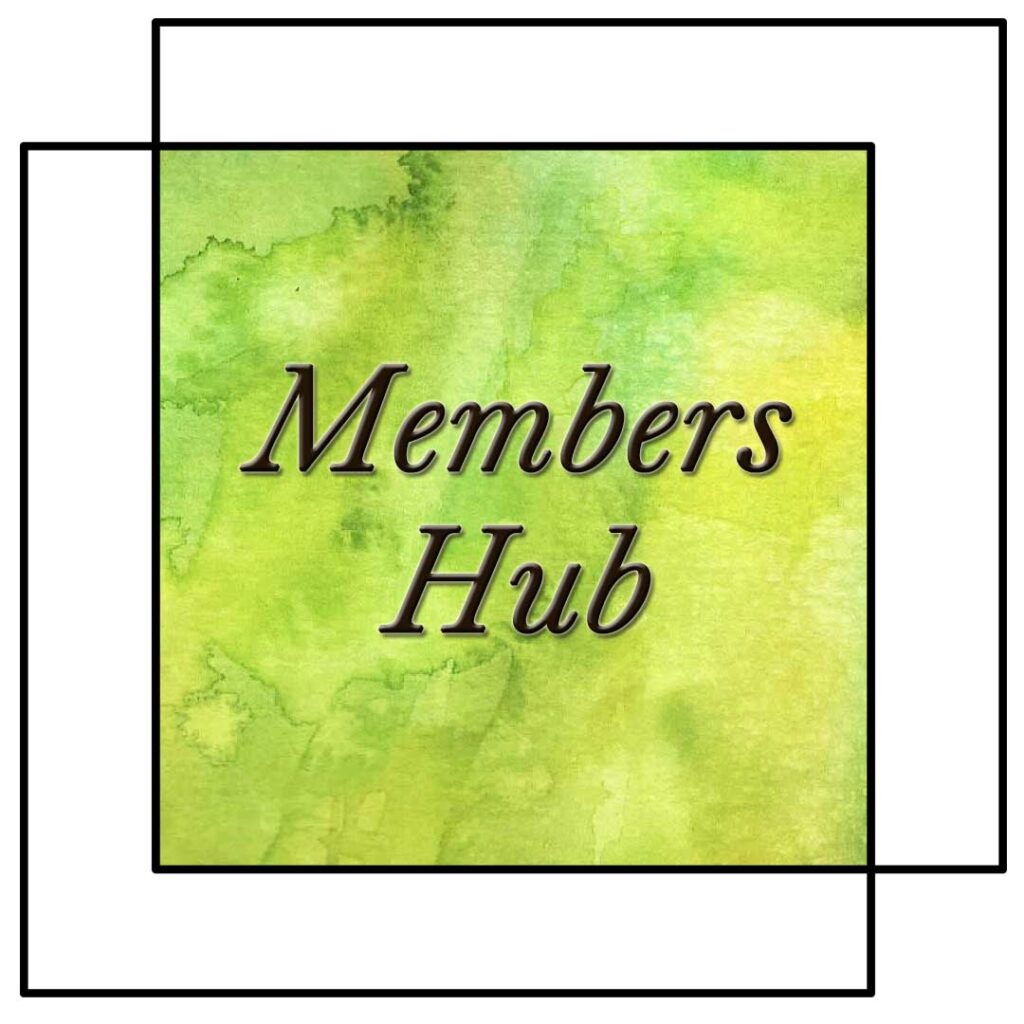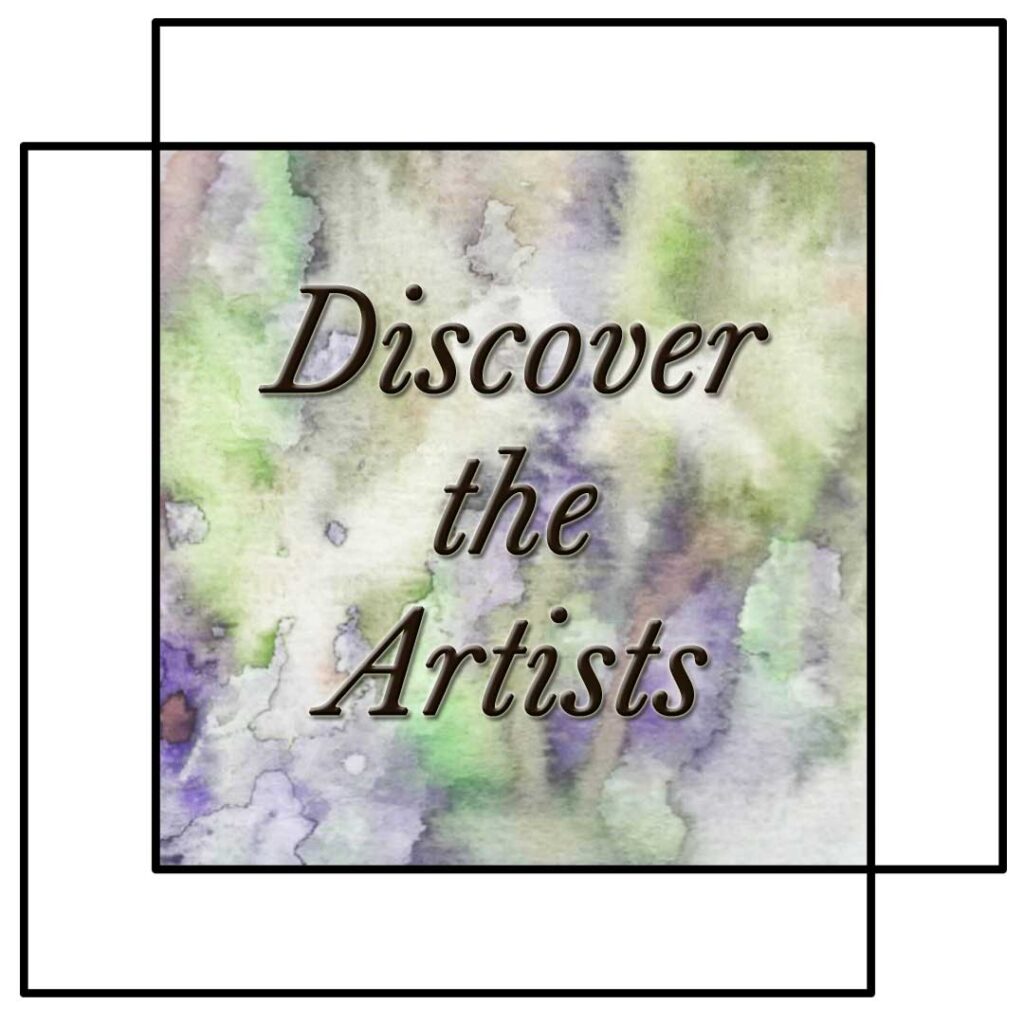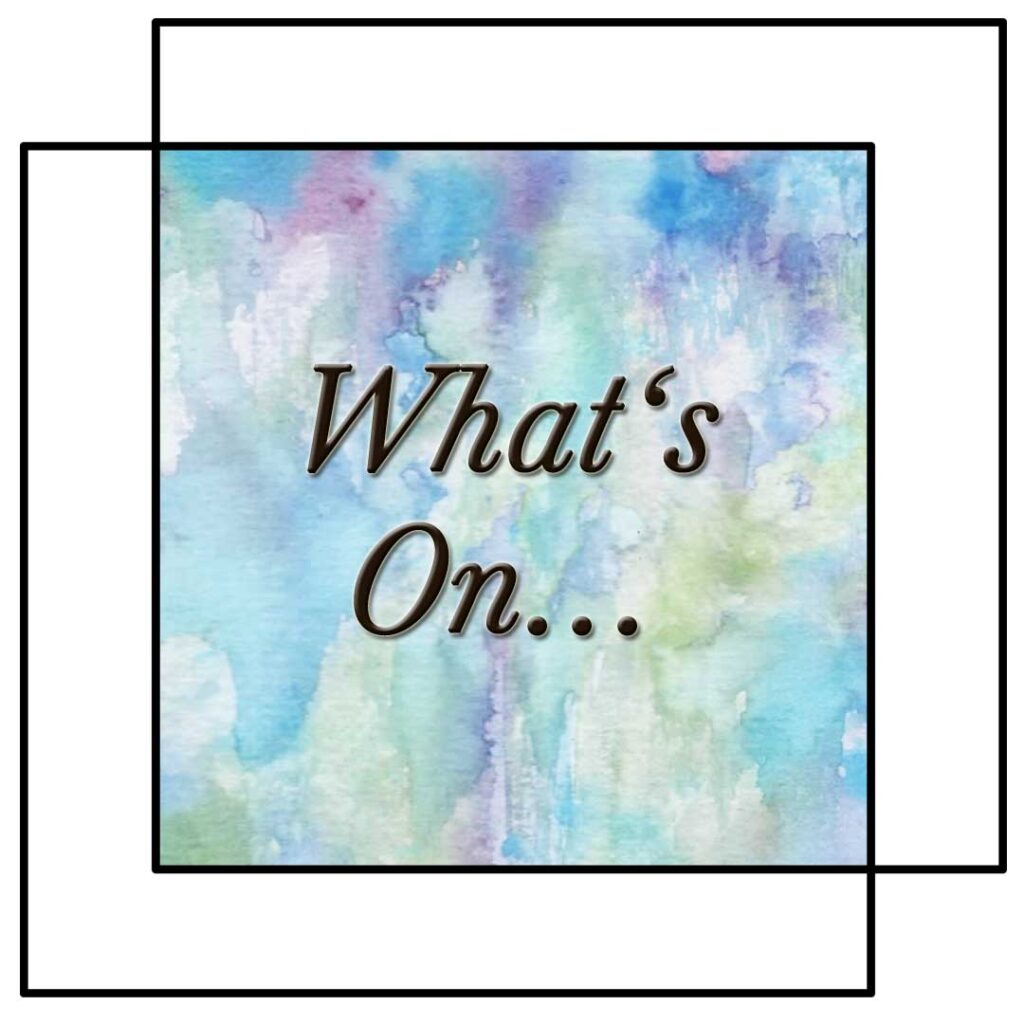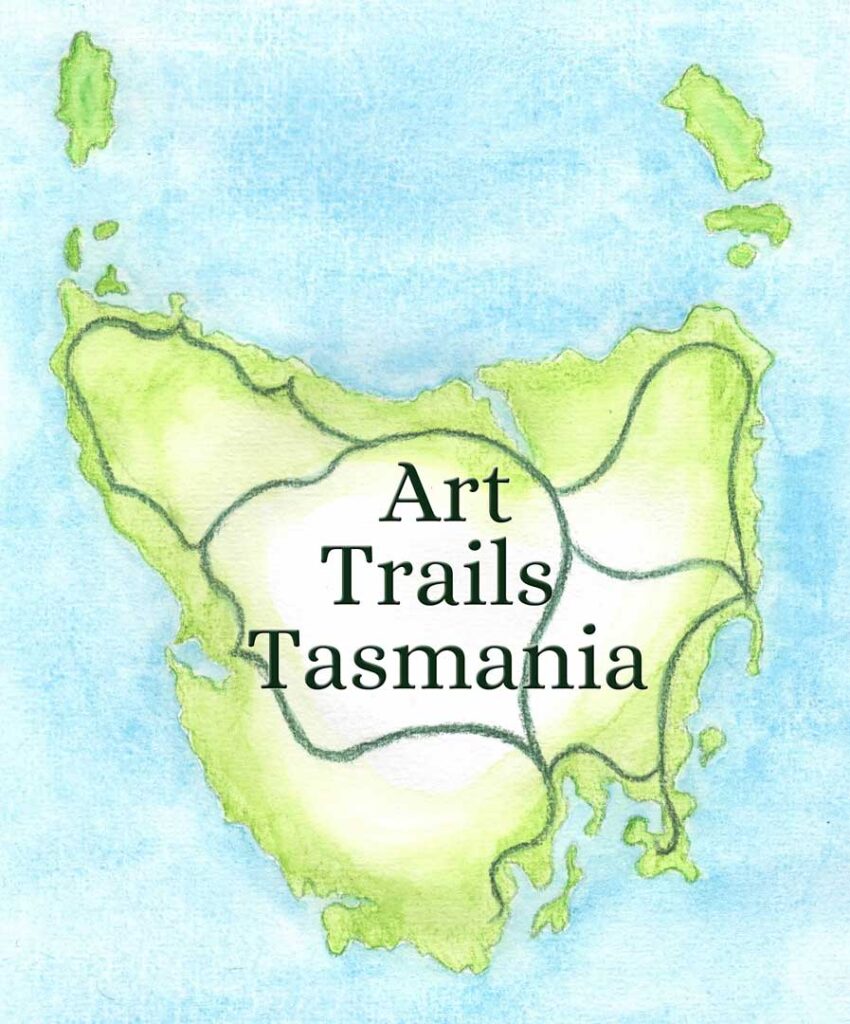Finding Joy in Restful Creativity
Creativity does not thrive on constant motion; it flourishes when given space to breathe. Rest is not absence, but a quiet resource that renews energy, focus, and imagination.
Where Part 1 explored how boredom, sleep, and daydreaming nurture the creative mind, this companion piece offers twelve practical rituals that turn rest into fertile ground for artistic growth.
These practices are intended to be lived slowly, integrated gently, and tailored to Tasmania’s landscapes — from the damp hush of rainforests to the bright clarity of coastal light.
Each ritual offers a way to pause with purpose: moments where the senses, body, and imagination find harmony. They encourage playfulness, creative mindfulness, and the joy of making without expectation.
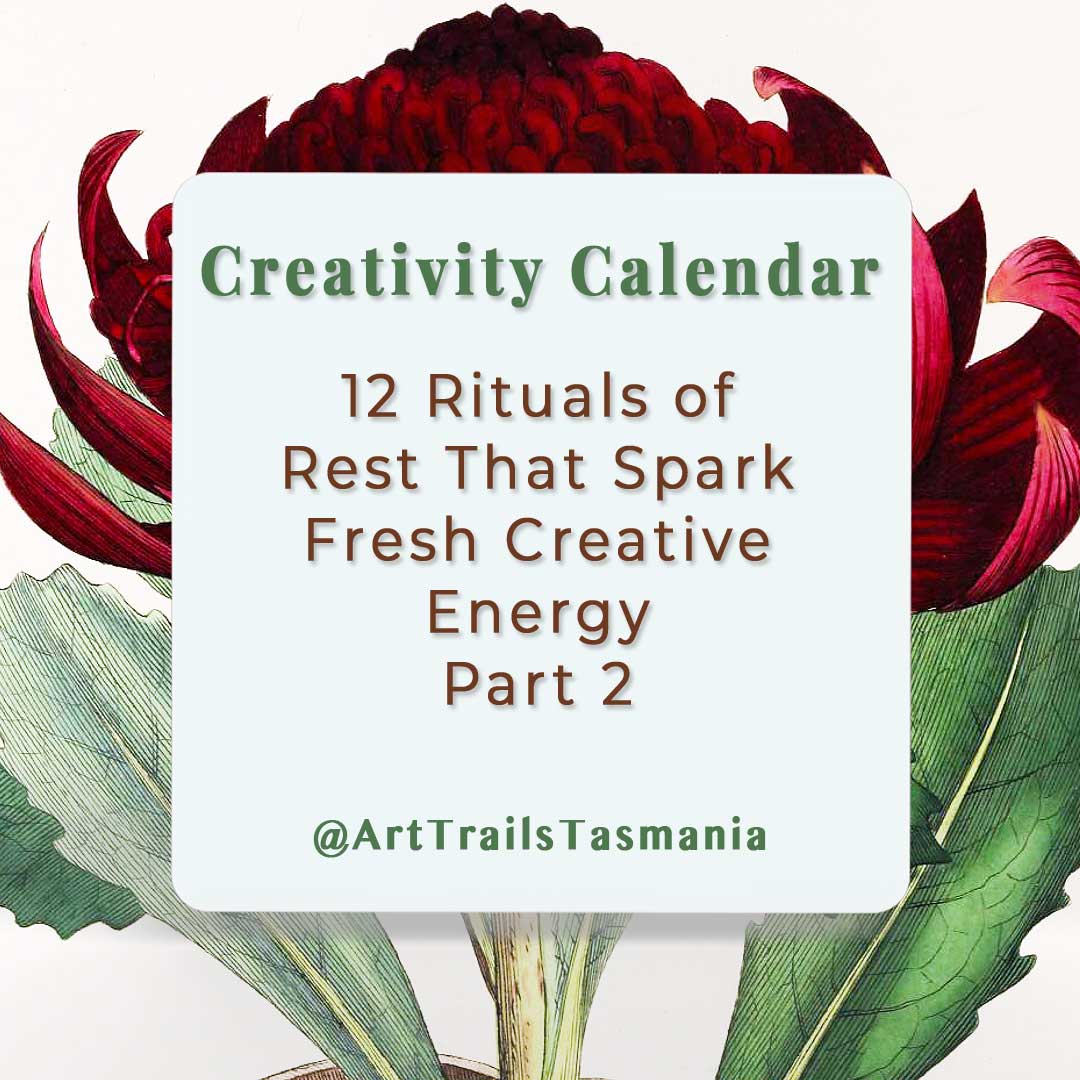
12 Practical Rituals to Explore Your Creativity
Here are 12 creative rituals for you to make your own:
1. Nature Journalling on Slow Walks
A slow walk becomes a moving meditation when combined with a sketchbook. Wander without hurry through a favourite patch of bush, a beach track, or a local garden.
Instead of counting steps or distance, attend to rhythm — the crunch of gravel, the rustle of leaves, the scent of blue gums.
Pause often to observe closely: a feather caught in grass, the spiral of a shell, a shadow pattern on bark.
Open the sketchbook and record what draws attention.
It might be a quick contour sketch, a splash of colour, or a few words describing texture or movement.
Allow imperfect marks; let curiosity lead. Nature journalling turns the outer landscape into a mirror for the inner one.
Over time, the pages fill with reminders of small wonders — a personal archive of sensory moments that quietly feed the creative spirit.
2. Blind Contour Sketching
Choose a small object — a seed pod, pebble, or flower — and place it before you.
Fix your eyes on the subject and, without looking at the page, let your pencil trace its outline in a single continuous motion.
Resist the urge to peek or correct. What emerges may look awkward, even comical, but that’s the beauty of the exercise.
Blind contour drawing teaches surrender and attentiveness. It shifts focus from results to the pure act of seeing.
This ritual dissolves stiffness in the creative hand and reminds artists that observation, not precision, is the heart of expression.
Repeating it regularly develops trust in the line itself — each curve and wobble becomes evidence of genuine looking.
Over time, this small act of discipline restores the beginner’s joy, where discovery outweighs outcome.
3. Five-Minute Creative Experiments
Creativity often thrives within small, well-defined limits. Set a timer for five minutes and give yourself a prompt such as “lines only”, “contrast”, or “movement”.
Choose any medium — pencil, collage scraps, ink, or watercolour — and start. The time pressure silences the inner critic and invites spontaneity. When the timer sounds, stop.
This ritual is a playground for the imagination.
Because the commitment is brief, experimentation feels safe; mistakes lose their weight.
Regular five-minute sessions keep creative muscles supple between larger projects.
Over weeks, these quick studies accumulate into an archive of textures, colours, and compositions that may later spark bigger ideas.
Above all, this simple ritual celebrates play — a reminder that joy and curiosity are the natural states of a healthy creative practice.
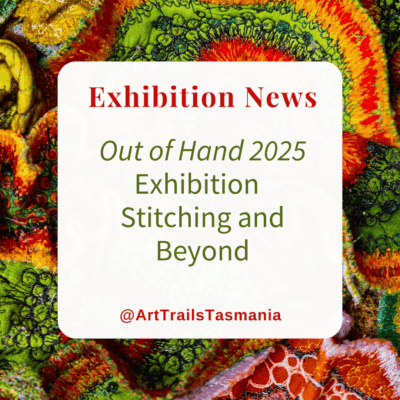
The Stitching and Beyond Out of Hand Exhibition
It is time to celebrate the joys of textile art with the always popular Stitching and Beyond “Out of Hand” Exhibition!
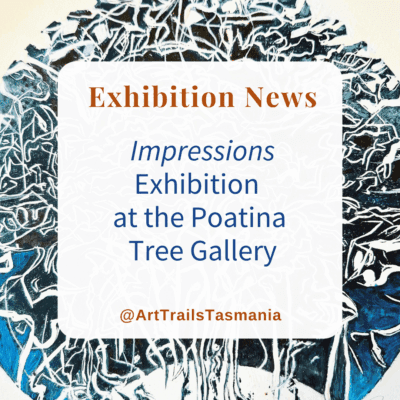
Impressions Exhibition at the Poatina Tree Gallery
Come discover the inspiring “Impressions” exhibition featuring the Newfields Printmakers at the Poatina Tree Gallery, the perfect creative day trip!
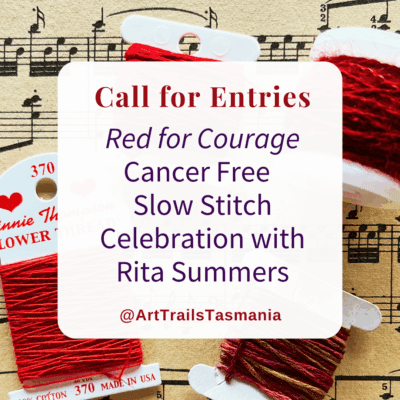
Red for Courage Slow Stitch Celebration with Rita Summers
Be part of this unique call for entries as Rita Summer celebrates being free of cancer with her “Red for Courage” exhibition and send in your slow stitch entries!
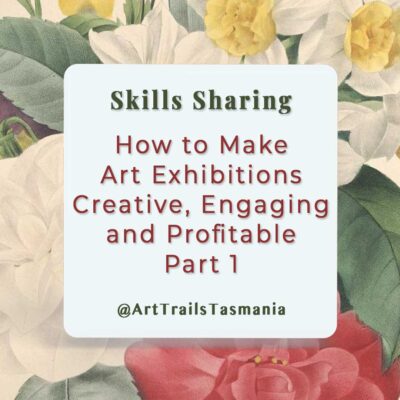
How to Make Art Exhibitions Creative, Engaging and Profitable Part 1
Successful art exhibitions can be game changers for artists, galleries and art societies, so dive into Part 1 of our guide on How to make your art show a success!
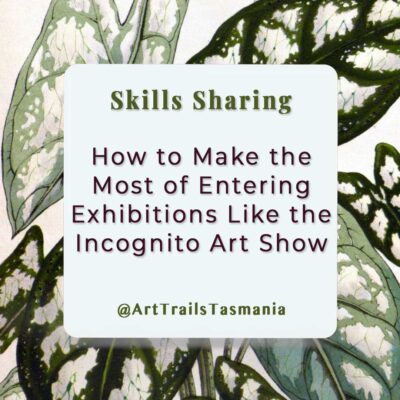
How to Make the Most of Entering Exhibitions Like the Incognito Art Show
Discover how to make the most of the opportunity of entering the Incognito Art Show so you can grow your Artist Profile, find new supporters and buyers and flourish!
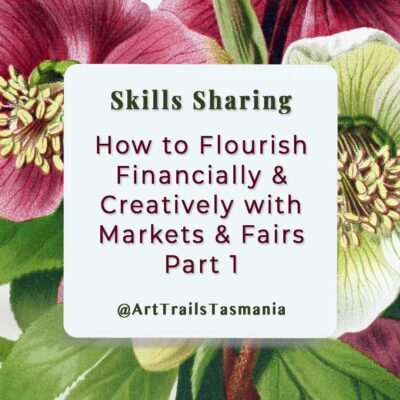
How to Flourish Financially and Creatively with Markets and Fairs Part 1
In Part 1 of our series we look at how markets and fairs can be a great way to bring in money and grow creatively.
4. Creative Mindfulness: Listening with the Eyes
Find a still spot — perhaps a veranda, riverside, or shady tree.
Sit quietly and soften your gaze toward one area of the landscape. Rather than labelling what is seen, let the eyes rest as if listening.
Notice how light alters colours, how wind stirs patterns, how edges blur when attention relaxes.
This form of creative mindfulness teaches presence through looking. It anchors awareness in sensory experience rather than analysis.
Over time, such gentle attention seeps into drawing, writing, or crafting; perception becomes more nuanced, responses more intuitive.
Practised regularly, creative mindfulness it quietens mental chatter and restores focus. The world becomes richer, and in that richness, creativity reawakens — not forced, but invited.
5. Dream-Seed Journalling
Dreams are natural collaborations between imagination and rest. Keeping a notebook beside the bed allows fleeting images to be caught before they fade.
Upon waking, jot down fragments — colours, words, feelings, odd scenes. Resist editing or interpretation.
Over days and weeks, these scattered notes accumulate into a dream-seed journal: a collection of symbols that can later find form in sketches, stories, or designs.
Revisiting them offers surprising insights; recurring themes might whisper about new creative directions.
Even the act of recording deepens connection with intuition.
Dream-seed journalling reminds artists that rest continues to work quietly on their behalf, weaving unseen patterns that later blossom into tangible ideas.
6. The “No-Goal” Making Session
Allocate a stretch of uninterrupted time — perhaps an hour — to create without purpose.
Choose materials that feel inviting and begin without a plan. Follow impulse: make marks, tear paper, arrange objects, apply colour freely. The aim is to experience the process rather than produce an outcome.
In a world obsessed with results, the “no-goal” session feels liberating.
It dismantles pressure and rekindles curiosity. The mind rests because there’s nothing to achieve, and in that space, genuine exploration emerges.
Many artists rediscover playfulness through this approach — the kind that first sparked their love of making.
Some sessions yield accidental beauty; others end in mess. Both are equally valuable, for each session restores confidence in instinct and the joy of creation itself.
And it can be a surprisingly practical path towards revealing your own creative voice.
7. Micro-Rests in the Studio
Sustained focus can quietly drain energy, even when enthusiasm is high.
Introducing micro-rests within studio time preserves vitality.
Every 30–45 minutes, set tools down, close the eyes briefly, and take three deep breaths.
Look out a window, stretch hands, or step outside for a moment of sunlight.
These pauses recalibrate attention and prevent burnout.
They remind the body and mind that creativity benefits from rhythm — exertion balanced with ease.
Artists who incorporate micro-rests often notice more sustained flow and fewer mistakes.
Over time, the practice builds resilience; creativity becomes less a sprint, more a steady dance between action and recovery.
8. Seasonal Foraging and Material Play
Tasmania’s shifting seasons offer abundant materials for creative rest.
After rain, the ground gleams with leaves, twigs, and stones; in winter, the coast reveals shells and driftwood. Foraging is best done slowly and respectfully — take only what has already fallen.
Lay collected items on a workbench or windowsill. Let them remain there for days, perhaps weeks, without immediate use.
Observe how shapes and colours change as they dry or fade. Later, they might become printing plates, inspiration for textures, or the starting point for a sketch.
The act of gathering connects body and place, and the waiting period teaches patience. Creativity here grows from rhythm — a cycle of collecting, contemplating, and making.
9. Mapping the Creative Voice
A simple sketchbook exercise can clarify personal direction. Begin by choosing a word or emotion that resonates — “stillness”, “wild”, “renewal”.
Write it in the centre of a page. From that point, branch out with lines, shapes, or colours that echo the word. Add fragments of phrases, doodles, or associations that surface.
Over time, these maps form a visual diary of inner language. They reveal patterns — certain colours or symbols that repeat — offering clues about evolving themes.
This ritual encourages reflection without overthinking. It provides a restful way to engage creatively while stepping back from output.
Mapping the creative voice grounds practice in authenticity, showing that rest and reflection are integral to self-expression.
10. Visual Haiku Breaks
Keep a small poetry book or local art catalogue near the workspace. When energy dips, stop working and open it at random.
Read one short poem or study one artwork slowly, letting words or images sink in. Then, on a blank page, respond with three marks, three words, or a tiny sketch — your own “visual haiku”.
This ritual acts as a reset button for the mind.
The brevity of haiku encourages clarity, while the visual response reconnects feeling and form.
Practised regularly, it cultivates the ability to find depth in simplicity. It also bridges disciplines, allowing writing, art, and mindfulness to blend.
A single haiku break can shift mood, release tension, and restore creative rhythm within minutes.
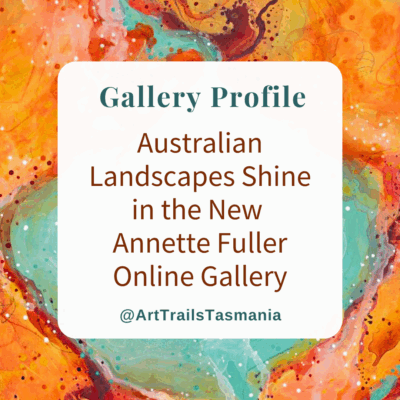
Australian Landscapes Shine in the New Annette Fuller Online Gallery
Come discover Annette Fuller’s new online art gallery with its devotion to contemporary Australian landscapes, beauty and light.
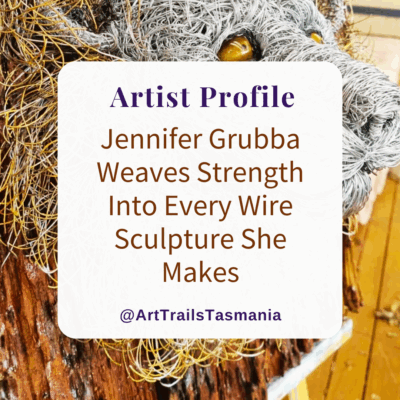
Jennifer Grubba Weaves Strength Into Every Wire Sculpture She Makes
Through healing and creativity, Jennifer Grubba transforms wire sculpture into soulful art, using each twist to calm the mind and express her recovery journey.
11. Seasonal Reflection and Sketch Exchange
At the end of each season, take an hour to revisit recent work — journal pages, sketches, photographs, or experiments.
Spread them out and look without judgement. Which ones still feel alive? Which carry quiet promise? Note these in a few lines on the back of the page or in a notebook.
If possible, exchange a few pieces with another maker — through the post, at a local market, or over tea.
Seeing one’s work through someone else’s eyes offers fresh insight. Reflection brings closure; sharing reawakens connection.
This gentle ritual of review and exchange ensures creative growth remains communal and cyclical, much like the seasons themselves.
12. Light Sketching at Dawn or Dusk
Dawn and dusk hold a softness that encourages contemplation.
Settle outdoors with a sketchbook or camera as the light shifts. Work quickly, responding to changing colours and forms. Allow imperfection; let the fading or emerging light decide when to stop.
These sessions nurture patience and humility. The transient light demands attentiveness but forbids overworking.
It invites surrender — a trust in fleeting beauty.
Repeated through the year, the practice documents the landscape’s moods and deepens connection with place.
For many, it becomes a daily meditation: a pause between sleep and activity, rest and creation, where the boundary between both gently dissolves.
This practice can be a lovely pathway to healing with creativity.
Rest as a Companion to Making
These twelve rituals transform rest into a creative ally. They work best when practiced lightly — woven into ordinary routines rather than scheduled as obligations.
Each one offers a different way to pause: through attention, touch, reflection, or play. Which ones are resonating with you? Are there variations on them that appeal?
For artists and makers, these practices align naturally with local landscapes and rhythms — sea air, shifting skies, and bush textures.
Rest becomes not a withdrawal but a listening, a moment where the mind slows enough to let imagination breathe.
When creativity is nourished by rest — by nature journalling, sketching, mindful seeing, and joyful experimentation — energy returns in fresh and surprising ways.
The voice of making grows clearer, the process becomes kinder, and the work itself begins to hum with renewed life.
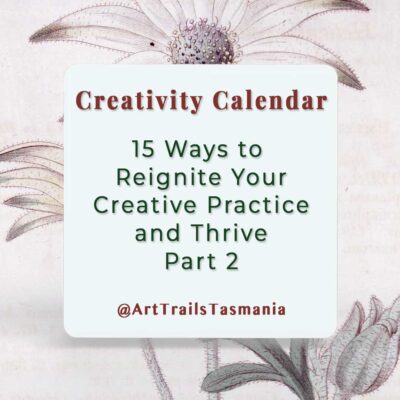
15 Ways to Reignite Your Creative Practice and Thrive Part 2
In Part 2 of our series on flourishing with your creative practice we explore 15 ways to find your path back to creativity, letting you live the Good Life your way.
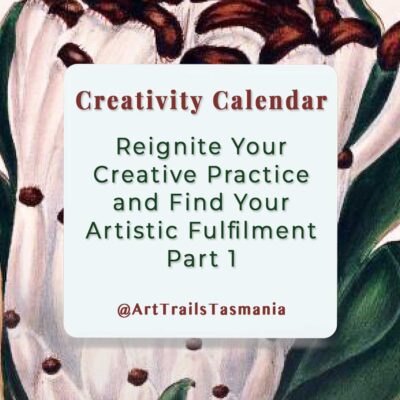
Reignite Your Creative Practice and Find Artistic Fulfilment Part 1
Finding your path back to creativity and reigniting your creative practice can bring a deep sense of artistic fulfilment is the focus of Part 1 in our series.
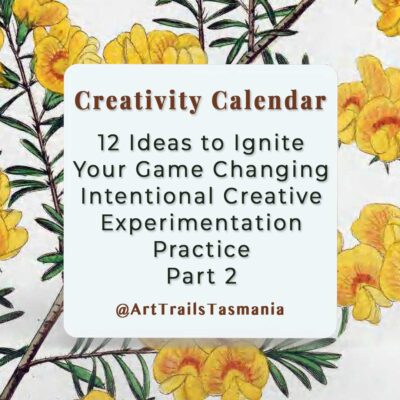
12 Ideas to Ignite Your Intentional Creative Experimentation Practice Part 2
In Part 2, discover 12 ideas to embrace curiosity and grow through Intentional Creative Experimentation Practice— explore your creativity with Art Trails Tasmania!
Read the Latest How To Blog Stories
15 Practical Ways to Effective Promote Your Art Exhibitions Part 2
15 Practical Ways to Promote Your Art Exhibitions In Part 1 on how to make your art exhibitions successful we looked at the features, elements and ways to create an engaging, vibrant and profitable event. Here in Part 2 we delve into the all important promoting and...
How to Make Art Exhibitions Creative, Engaging and Profitable Part 1
How to Make Art Exhibitions Enjoyable, Profitable and Vibrant Creating successful art exhibitions means more than just hanging work on a wall. And when done well, all involve benefit creatively, financially and professionally. As with all things in life it is much...
How to Make the Most of Entering Exhibitions Like the Incognito Art Show
Making the Most of Exhibiting in Events Like the Incognito Art Show The Sydney-based Incognito Art Show is now Australia's largest annual art show. It is open to any artists intersted in taking part. It is an event where artists anonymously donate postcard-sized...
12 Key Ways to Flourish with Markets and Fairs Part 2
12 Practical Ways to Promote and Showcase Your Creative Business at Markets and Fairs Markets and fairs offer incredible opportunities for artists and makers to flourish financially and creatively. This is Part 2 in our series on how to thrive with your small...
How to Flourish Financially and Creatively with Markets and Fairs Part 1
How to Make Money at Markets and Fairs and Grow Creatively Markets and fairs are fantastic opportunities for artists and makers to connect with customers and grow a creative business. This is part 1 of a two-part series on how to flourish financially and creatively...
17 Ways How to Make Your Charity Collaborations Succeed Part 2
How and Where to Make your Charity Collaborations Shine Charity collaborations can offer artists a rewarding opportunity to give back while enhancing their own visibility and reputation. In part 2 of our series on charity collaborations, we delve into practical...
Read the Latest Blog Stories and Flourish…
Discover Creative Freedom Through a Sketchbook Practice Part 1
Nurturing Creativity Sketchbook practice is a creative habit that nurtures confidence, curiosity and exploration, offering artists and crafters a space to play without fear or pressure. This blog story is Part 1 of a two-part series exploring the creative...
Stitching Stories of Colour, Texture and Beauty by Cindy Thompson Exhibition
Textile Artist Exhibition "Stitching Stories" will be exhibited at Sheffield Art Gallery for two months, in August and September. The exhibition will show Cindy's colourful work encompassing many different textile art techniques. There are many items for sale as well...
Kids Creative School Holiday Workshops at St Helens
Calendar of Creative Kids Workshops at St Helens Creative school holiday workshops for kids aged 8–12 at Jane Seychell Gallery, St Helens. Led by professional artists, children can paint a ceramic plate, learn to draw, or decorate cupcakes. All materials included and...
10 Ways to Heal and Flourish with Creativity and Community Part 2
10 Nurturing Paths to Creativity Creativity has been both my refuge and my guide in these tender months of grief and exhaustion. This is Part 2 of a two-part series, where I continue to explore how creativity offers quiet pathways to healing when life feels undone. ...
The Launceston Art Society Calendar of Workshops
The Latest Calendar of Workshops with the LAS The Launceston Art Society is delighted to share with you an inspiring calendar of workshops! From pastels to mixed media to acrylics to oil painting, these workshops are all about developing your skills, whether they're...
Book Review Inspiration: 10 Creative Books for Makers, Artists and Nature Lovers
Book Reviews for Art & Nature Lovers This book review features a wonderful selection of titles published by Search Press Australia, all readily available online. These books are a celebration of creativity across a diverse range of mediums and techniques, making...
“Secret People, Secret Places” Open Studio Art Trails with Christie Lange
Open Studio Time: Explore the Creative Process with Christie Lange Discover ceramic artist Christie Lange’s open studio during Secret People, Secret Places at the Bay of Fires Winter Arts Festival. Explore porcelain sculptures inspired by Tasmania’s landscapes, meet...
Australian Landscapes Shine in the New Annette Fuller Online Gallery
Creating an Online Gallery to Celebrate Annette Fuller's Contemporary Art I launched Annette Fuller Art online store on the 1 April this year – no it wasn’t an April fools joke!!! After months of behind the scenes work and many late nights, I pressed the button on my...
Jennifer Grubba Weaves Strength Into Every Wire Sculpture She Makes
Jennifer Grubba is Untangling a Path to Healing with Her Wire Sculpture Practice My wire sculpture has been part of my recovery after a diagnosis of PTSD, Depression, Severe Anxiety and Agrophobia. I find the wire is incredibly meditative, and I can easily lose myself...
Read What Our Members Say About Belonging
Join the growing, supportive artists community today and have your Artist story told here.
Belinda is doing a great job creating a professional looking artist hub online. Check out the profile I posted recently to see how well she does them. To all my artist friends let’s help make this THE go to place to discover local artists.
You won’t regret joining Art Trails Tasmania . It’s a welcoming community for creatives at any career stage.Becoming an Art Trails Tasmania member wasn’t a hard decision for me to make as it’s such a wealth of knowledge and support.Being member provides a quality way to showcase your creative endeavours and it’s quickly growing in reach.
We operate a home based picture framing business and recently joined Art Trails Tasmania as a means to giving us exposure to the wider artist community. We have almost immediately seen increase in activity thru our online sites, which I am certain will lead to more opportunities to grow our business.

